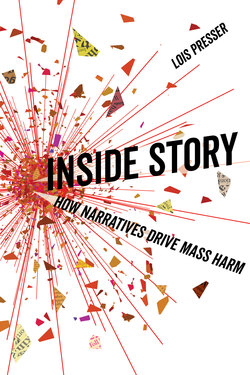Inside Story

Реклама. ООО «ЛитРес», ИНН: 7719571260.
Оглавление
Lois Presser. Inside Story
Отрывок из книги
Inside Story
How Narratives Drive Mass Harm
.....
Smith’s approach may be contrasted with one centered on propaganda or spin, with which dubious policies are sold to the masses. The concept of propaganda does not go far enough to depict the fundamental shaping role of discourse in preparing a group to inflict harm by constructing values, goals, and “truths” about experience and parties to it. In addition, narratives characterize actors, patients, and action, whereas propaganda is more generic as to focus.
War and other mass harms that we call violent are typically promoted by stories of a virtuous protagonist facing off against a malevolent other whose forceful overcoming is necessary for salvation. For example, war enemies are “encoded as polluted,” whereas “we” are “encoded as pure” (P. Smith 2005, p. 27). But this is just one manifestation of the general harm logic of reduction of targets, according to which they are cast as having few interests or we project our own interests onto them (Presser 2013). How we construct targets is imperative because the most murderous among us is not generically aggressive but rather aggressive toward particular beings, under some conditions and not others. In the case of mass “violence” we reduce the target to an enemy bent on persecuting or otherwise hurting us. In cases of mass negligence or legal, institutionalized destruction, the target is a simplified and marginalized group or species. We also construct ourselves in terms of capacities, rights, duties, and so forth.
.....